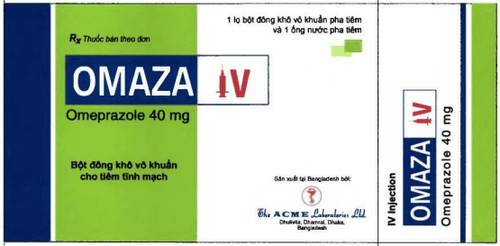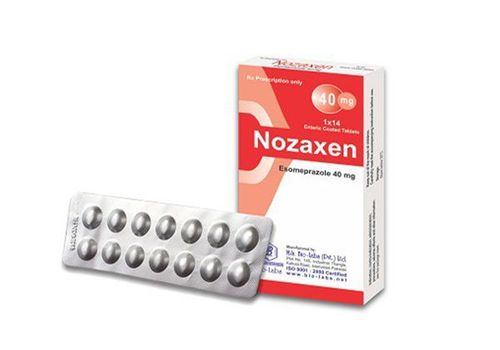This is an automatically translated article.
Pawentik belongs to the group of gastrointestinal drugs, the main ingredient is Rabeprazole sodium. It is commonly used to inhibit gastric acid secretion in the treatment of peptic ulcers, gastroesophageal reflux disease (GERD), or Zollinger-Ellison syndrome. Follow the article below to know how Pawentik works?
1. Uses of Pawentik
Pawentik drug has the main ingredient Rabeprazole sodium, which inhibits gastric acid secretion by the following mechanism:
Rabeprazole inhibits gastric secretion both basal and in an excited state by inhibiting the enzyme H+/K+-ATPase in parietal cells of the gastric mucosa. Since this is considered to be the acid, hydrogen or proton pump in parietal cells, rabeprazole is considered a proton pump inhibitor. Rabeprazole is bound to the enzyme H+/K+-ATPase to block the final stage of gastric secretion. In the parietal cells of the stomach, rabeprazole is protonated and converted to the active sulfenamide and then binds to the proton pump cysteine, inactivating this enzyme. After taking about 20mg of Rabeprazole, the inhibitory effect on gastric acid secretion will appear within 1 hour, the maximum effect within 2-4 hours. The inhibitory effect can last up to 48 hours. The inhibitory effect of rabeprazole on acid secretion may increase with daily dosing and reach a steady state after 3 days of dosing. Acid secretion becomes normal after 2-3 days of discontinuation of the drug. Mechanism of anti-ulcer action of Rabeprazole sodium: Rabeprazole can inhibit H.Pylori bacteria in people with duodenal ulcer due to its ability to attach to bacteria and inhibit urease activity. Combination therapy of Rabeprazole with 1 or more antibiotics (such as Clarithromycin, Amoxicillin) can effectively eradicate gastric H. pylori infection. Pawentik is usually indicated in the following cases:
Stomach ulcer, duodenal ulcer; Oral ulcer; Reflux esophagitis; Zollinger-Ellison syndrome. Pawentik is contraindicated in patients with hypersensitivity to any of the ingredients. This is an absolute contraindication, the patient is not flexible to take the drug for any reason.
2. Dosage of Pawentik:
Depending on the subjects and treatment goals, the dosage of Pawentik will be different, specifically as follows:
Gastroesophageal reflux disease (GERD): 1 tablet 20mg/day/time x 4- 8 weeks, can be used more as needed. Duodenal ulcer: 20mg/day x 4 weeks. Zollinger-Ellison syndrome: Initial dose is 60mg/day, titrated according to response. The average duration of treatment is 4-8 weeks for duodenal ulcer, 6-12 weeks for gastric ulcer and reflux esophagitis.
3. Side effects of the drug Pawentik:
In some patients when using Pawentik, side effects may occur such as:
Rash, urticaria; Hematologic changes; Affects liver function; Constipation, diarrhea ; Feeling of bloating, heaviness in the abdomen; Headache; Fever, allergic reactions; Chills, fatigue, chest pain below the breastbone; Gallstones and cholecystitis. If you experience these symptoms, the patient should stop using Pawentik and notify the doctor for appropriate treatment.
4. Precautions when using Pawentik:
Some general notes when using Pawentik include:
Must exclude the possibility of malignancy of gastric ulcer before using Pawentik for patients. Use caution when using Pawentik for pregnant and lactating women, patients with liver failure. Other subjects to note when using Pawentik: The elderly, children under 15 years old, kidney failure or subjects with myasthenia gravis, hepatic coma and stomach ulcers. Above is all information about Pawentik drug, patients need to carefully read the instructions for use, consult a doctor / pharmacist before using. Note, Pawentik is a prescription drug, patients need to use the drug as prescribed by the doctor, absolutely do not self-treat at home.













